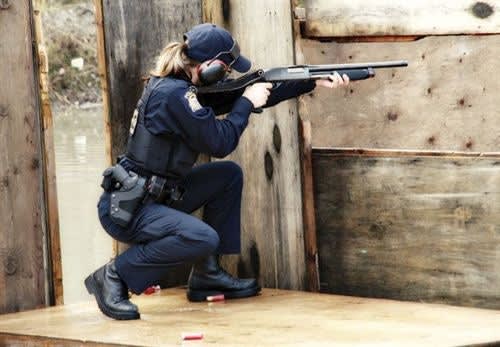Debra S. Frigulti, a senior instructor with Oregon-based Police Training Consultants, agrees with Farnham. "Women tend to learn things in detail," says Frigulti, who routinely teaches patrol tactics to women officers.
"When I teach sights, I teach sight alignment and sight picture separately," Frigulti explains. "Being detail oriented, once women understand the correct alignment of the front sight through the rear sight window and particularly that their focus has to be on the front sight, then they can place it correctly on the target, which is their sight picture. I will even have them thread the eye of a needle to understand where their focus has to be. Because the human eye is set to infinity, a shooter, male or female, has to make a conscious effort to focus on the front sight. The problem is our eye is constantly seeking the point of danger rather than the front sight. Only continuous training will develop the muscle memory of the eye to seek the front sight.
"We spend a lot of time on wound ballistics so women understand how critical correct shot placement is," Frigulti adds. "Even with a shot directly to the heart or aorta, there is enough oxygen in a perpetrator's system to allow him to return fire for up to 15 seconds. Enough where an officer could still be wounded or killed. That's why sight picture, the placing of the correctly aligned sights on the target, is so critical."
Frigulti points to the success of Russia's female snipers in the Second World War as a prime example of what women are capable of when it comes to firearms.
"Women have no problem with pulling a trigger, but they need to learn skills in detail," concludes Frigulti. "But when you're given a limited amount of time [for training], sometimes you don't get into the details. In my three-day female school, we explain the fundamentals in detail."














